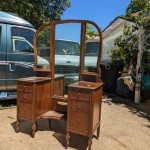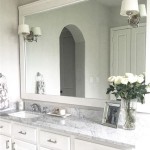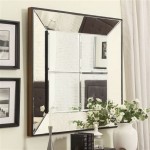Victorian Tabletop Vanity Mirrors: A Reflection of Elegance and Style
Victorian-era furniture and decor are renowned for their intricate craftsmanship, opulent materials, and a distinct air of grandeur. Amidst the lavish settings of Victorian homes, tabletop vanity mirrors played a significant role, serving not only as practical tools for grooming but also as statement pieces that accentuated the aesthetic of the room. These mirrors, often crafted with meticulous detail and adorned with decorative elements, were a reflection of the era’s obsession with beauty, refinement, and the pursuit of an idealized image.
Construction and Materials
Victorian tabletop vanity mirrors were typically constructed using a combination of high-quality materials, reflecting the Victorian era’s penchant for craftsmanship and luxurious details. The frames, often made of mahogany, rosewood, or walnut, were carefully carved with intricate patterns, such as floral motifs, acanthus leaves, or scrolling designs. Some mirrors featured gilded frames, adding an extra touch of opulence and reflecting the popularity of gold accents in Victorian interiors. The mirror itself was often bevelled, adding depth and visual interest to the reflection. The back of the mirror might be covered with velvet or fabric, further enhancing its aesthetic appeal.
Styles and Designs
Victorian tabletop vanity mirrors came in a variety of styles, each reflecting different aspects of the era’s design sensibilities. Some mirrors adhered to the Gothic Revival style, characterized by pointed arches, intricate tracery, and a sense of medieval inspiration. Others showcased the Rococo Revival style, with its playful curves, flowing lines, and ornate ornamentation. The Aesthetic Movement, which gained popularity in the latter half of the Victorian era, influenced the design of some mirrors, incorporating natural elements like botanical motifs and a focus on craftsmanship for its own sake. The choice of style often depended on the overall aesthetic of the room and the personal preferences of the owner.
Significance and Usage
Victorian tabletop vanity mirrors were more than just functional objects. They served as a testament to the era’s emphasis on personal appearance and self-presentation. In an age where elegance and refinement were highly valued, these mirrors provided a space for women to meticulously prepare for social events, ensuring their appearance aligned with the expectations of society. They were often placed in boudoirs or dressing rooms, creating a private space for personal grooming and reflection. The mirrors also served as decorative elements, adding a touch of sophistication and grandeur to the room, reflecting the Victorian obsession with creating aesthetically pleasing and luxurious environments.
Beyond the Mirror: A Reflection of Victorian Society
Victorian tabletop vanity mirrors offer a glimpse into the values and aesthetics of the Victorian era. They embody the era’s appreciation for craftsmanship, attention to detail, and the pursuit of beauty. These mirrors were not just practical tools but also symbols of status and taste, reflecting the Victorian obsession with creating an idealized image of oneself and one’s surroundings.

Lovely Ornate Victorian Tabletop Vanity Mirror Gothic Cast Iron Rococo Etched Raised Brass Broe Color Boudoir Dresser

Antique Brass Bradley Hubbard Table Vanity Mirror 1900 Victorian 3509 Bacchus

Victorian Table Mirror Make Up In Cast Iron Circa 1900 For At 1stdibs Antique Vanity With

Lovely Ornate Victorian Tabletop Vanity Mirror Gothic Cast Iron Rococo Etched Raised Brass Broe Color Boudoir Dresser

Vanity Mirror Iron Art Jm44 Tabletop Leaning Gold Nouveau Victorian Style

Cast Iron Rustic Vintage Heirloom Style Small Tabletop Oval Vanity Mirror Decor Ca

Antique Victorian Cast Iron Table Mirror 1890 For At Pamono

Antique Table Top Mirrors

Antique Victorian Cast Iron Table Mirror 1890 For At Pamono

Antique Brass Broe Victorian Style Vanity Mirror Tabletop G1








